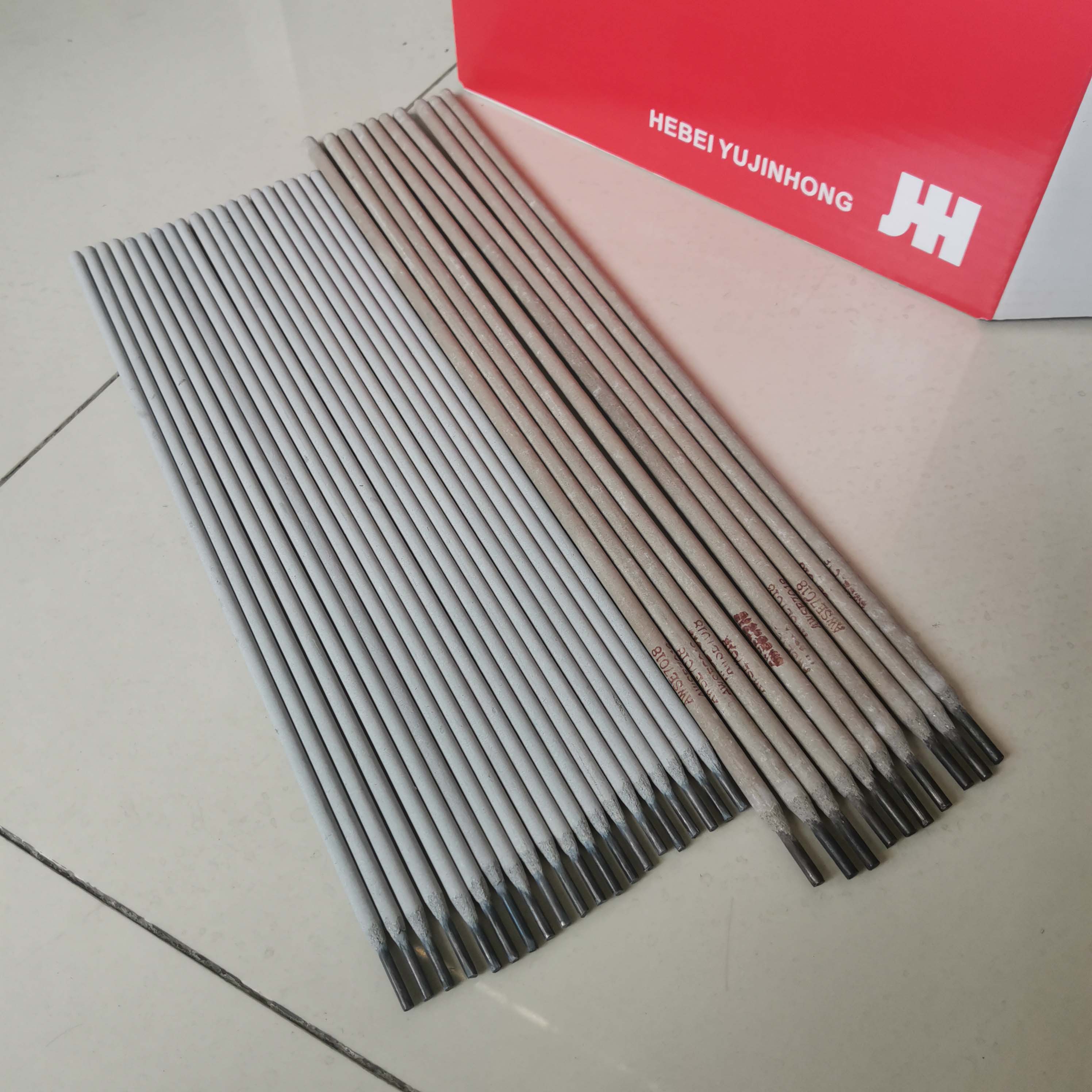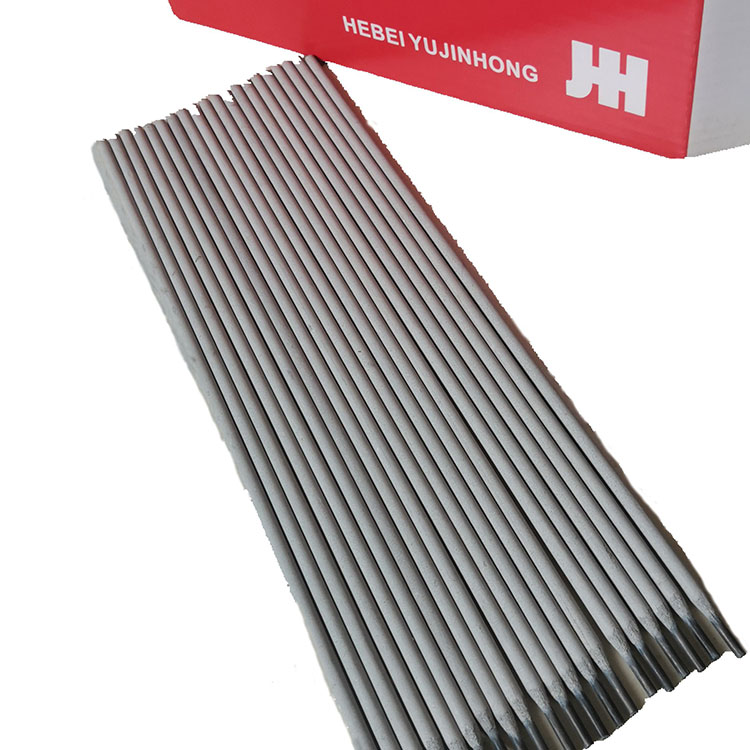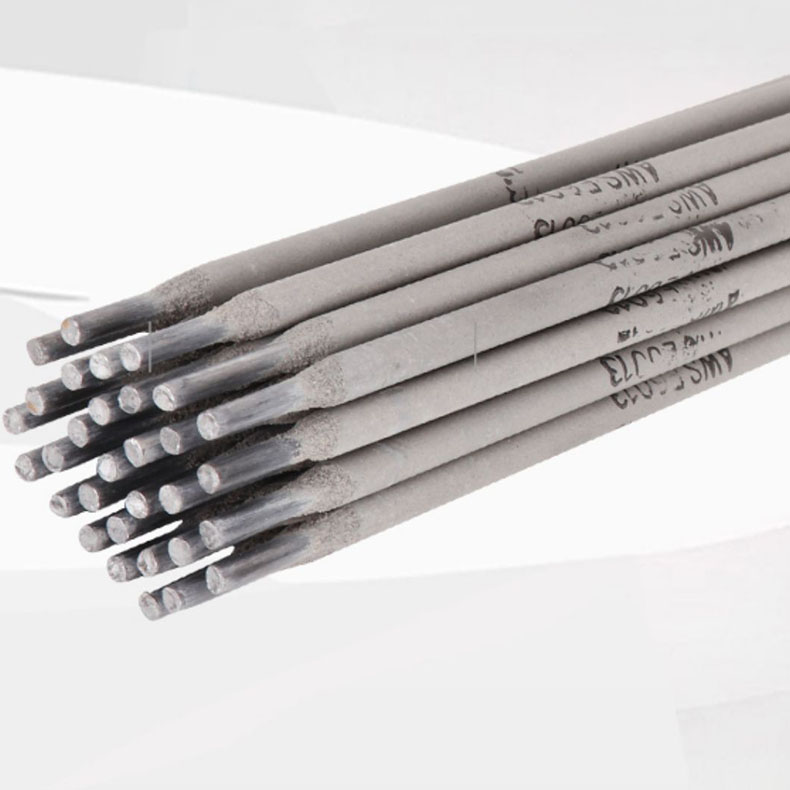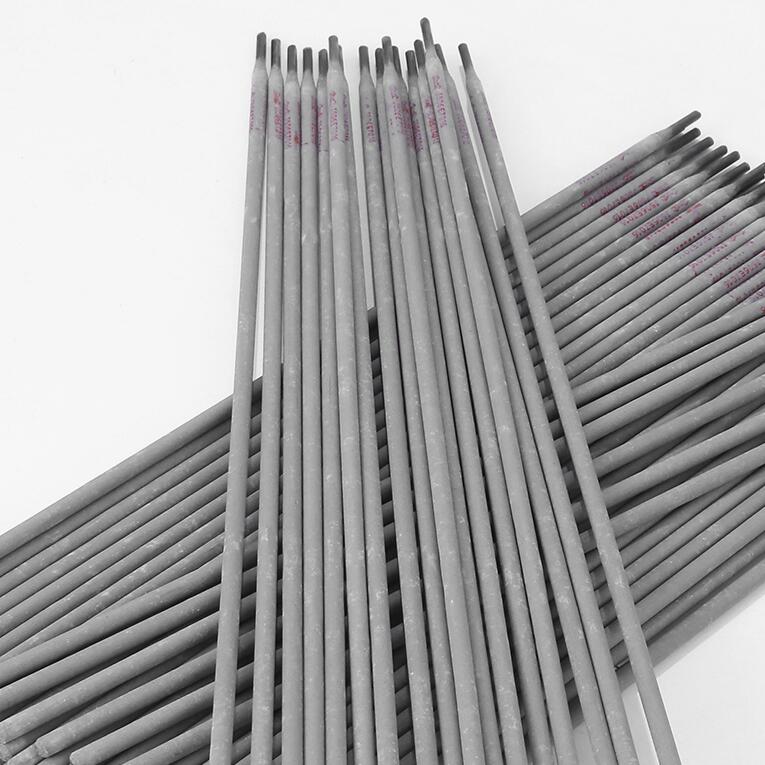J506 Welding Rod: High-Strength, Crack-Resistant Electrode
Precision Welding: An In-Depth Look at the J506 Welding Rod
In the demanding world of industrial fabrication and construction, the selection of appropriate welding consumables is paramount to ensuring structural integrity, operational longevity, and cost-effectiveness. Among the vast array of options, the j506 welding rod stands out as a critical component, particularly for welding low-alloy high-strength steels. Classified under AWS E7016, this low-hydrogen electrode is engineered for superior performance in applications requiring robust mechanical properties and excellent crack resistance.
The AWS E7016 classification denotes a specific set of characteristics that make this welding electrode 7016 ideal for challenging environments. It is characterized by its basic, low-hydrogen potassium coating, designed for all-position welding with AC or DC reverse polarity. This article will delve into the intricate details of its manufacturing, technical specifications, diverse applications, and the strategic advantages it offers to B2B decision-makers and welding engineers across various industries.

Figure 1: High-performance low-hydrogen electrode, optimized for critical applications.
Global Industry Trends in Welding Electrodes
The global welding consumables market is experiencing dynamic shifts, driven by escalating demands from infrastructure development, oil and gas, automotive, and heavy manufacturing sectors. Key trends include a growing emphasis on high-strength and specialized alloys, demanding welding electrodes like the j506 welding rod that can deliver superior metallurgical properties. There is a sustained push towards consumables offering enhanced productivity, reduced spatter, and improved welder appeal, directly impacting project timelines and costs.
Environmental regulations and worker safety concerns are also shaping product development, leading to the proliferation of low-fume and energy-efficient welding solutions. The demand for electrodes with consistent quality, traceable manufacturing, and adherence to international standards (e.g., ISO, AWS) is intensifying, reflecting a broader industry commitment to reliability and compliance. Furthermore, the increasing complexity of materials used in modern engineering—from advanced high-strength steels (AHSS) to specialized corrosion-resistant alloys—necessitates the continuous innovation and refinement of welding rod 7016 formulations to meet stringent performance criteria.
Manufacturing Process of the J506 Welding Rod
The production of a high-quality j506 welding rod is a multi-stage, precision-controlled process that ensures consistent performance and adherence to stringent specifications. The integrity of the final weld metal is heavily dependent on the quality of raw materials and the meticulous execution of each manufacturing step.
Process Flow:
- Core Wire Preparation: The process begins with high-quality steel wire, typically a low-carbon steel, which undergoes rigorous cleaning and quality checks to ensure freedom from scale, rust, and lubricants. The diameter is precisely controlled to meet AWS A5.01 specifications.
- Flux Material Compounding: This is a critical stage. The flux coating of the welding electrode 7016 comprises a carefully balanced mixture of minerals (e.g., calcium carbonate, rutile, fluorspar), ferroalloys (e.g., ferrosilicon, ferromanganese), and organic binders. These materials are precisely weighed, mixed, and then ground to a fine, consistent powder. The specific composition dictates the arc characteristics, slag properties, and mechanical properties of the weld metal, achieving the desired low-hydrogen capability of the j506 welding rod.
- Extrusion: The prepared flux mixture is then pressed onto the core wire using high-pressure extrusion dies. This process ensures a concentric and uniform coating thickness along the entire length of the electrode. The consistency of the coating is vital for stable arc performance and predictable weld quality.
- Baking/Drying: After extrusion, the electrodes are subjected to a controlled baking process in specialized ovens. This step removes moisture from the flux coating, which is crucial for achieving the low-hydrogen property of the welding rod 7016. Inadequate drying can lead to hydrogen-induced cracking in the weld metal. Baking temperatures and durations are strictly controlled, often ranging from 250-450°C for several hours, depending on the electrode type.
- Tip Cleaning & Branding: The bare tip of the electrode is cleaned to ensure good electrical contact for striking the arc. Electrodes are then branded with their classification (e.g., E7016) and manufacturer's mark.
- Quality Control & Testing: Throughout the entire process, and especially at the final stage, electrodes undergo extensive testing. This includes visual inspection for coating defects, dimensional checks, and rigorous performance testing. Mechanical tests (tensile strength, yield strength, impact toughness via Charpy V-notch) and chemical analysis of deposited weld metal are conducted to ensure compliance with standards like AWS A5.1/A5.1M and ISO 2560. NDT (Non-Destructive Testing) and DT (Destructive Testing) protocols are meticulously followed to guarantee product integrity.

Figure 2: The precise extrusion process ensures uniform flux coating for optimal performance.
Technical Specifications & Performance Parameters
Understanding the technical specifications of the j506 welding rod is crucial for engineers and procurement specialists to ensure optimal material selection for critical projects. These parameters define the electrode's suitability for specific base metals, welding positions, and environmental conditions. As an AWS E7016 electrode, it consistently delivers superior mechanical properties and crack resistance due to its low-hydrogen coating and specific alloy composition.
Typical Chemical Composition of Deposited Metal (%)
Typical Mechanical Properties of Deposited Metal
Operational Characteristics:
- Welding Positions: All positions (Flat, Horizontal, Vertical Up, Overhead).
- Current Type: DC Reverse Polarity (DC+) or AC. DC+ is generally preferred for deeper penetration and more stable arc.
- Low Hydrogen Content: Key feature, typically ≤ 5 ml/100g of deposited metal, mitigating hydrogen-induced cracking in critical applications.
- Arc Stability: Excellent, ensuring smooth operation and consistent weld bead appearance.
- Slag Removability: Good, facilitating post-weld cleaning and inspection.
Comparative Analysis: J506 (E7016) vs. E7018 Welding Electrodes
While both E7016 and E7018 are low-hydrogen electrodes known for their excellent mechanical properties, understanding their distinctions is vital for optimized selection. The E7016 offers strong penetration and is preferred for vertical-up and overhead positions, while E7018 provides a smoother arc with a high deposition rate, often favored for flat and horizontal positions on thicker materials.
Key Application Scenarios & Target Industries
The robust properties of the j506 welding rod make it indispensable across a spectrum of heavy industries where structural integrity and resistance to harsh operating conditions are critical. Its low-hydrogen characteristic is particularly valued in preventing costly defects in applications involving restraint and thicker sections.
- Petrochemical Industry: Used extensively in the fabrication and repair of pressure vessels, pipelines, storage tanks, and heat exchangers. The E7016’s ability to weld low-alloy, high-strength steels and its resistance to hydrogen-induced cracking are vital for maintaining the safety and operational efficiency of critical infrastructure in challenging chemical environments.
- Power Generation: From conventional thermal power plants to nuclear facilities, the construction of boilers, turbines, and structural components relies on the consistent performance of the welding electrode 7016. Its high ductility and impact toughness ensure the resilience of structures subjected to high temperatures and pressures.
- Metallurgy & Heavy Manufacturing: In steel mills, foundries, and heavy machinery fabrication, welding complex structures and repairing cast iron components often requires the specific properties offered by the j506 welding rod. It facilitates the welding of heavy sections where preheating and post-weld heat treatment might be employed.
- Shipbuilding & Offshore Structures: The construction of marine vessels, offshore oil rigs, and platforms demands welding consumables that can withstand dynamic loads, corrosive saltwater environments, and extreme weather. The excellent mechanical properties and crack resistance of welding rod 7016 are crucial for ensuring the long-term stability and safety of these structures.
- Construction & Civil Engineering: For bridges, high-rise buildings, and other large-scale civil projects, the structural welding of high-strength steel beams and columns benefits significantly from the reliability of E7016 electrodes. Its all-position capability aids in complex fabrication and on-site assembly.
- Water Supply & Drainage Systems: Fabrication of large-diameter pipes, valves, and pumping station components often involves specific steel grades that require low-hydrogen welding to prevent brittle fracture, making the j506 welding rod an ideal choice.

Figure 3: Welding in a demanding industrial environment, showcasing precision application.
Technical Advantages of the J506 Welding Rod
The superior design and consistent manufacturing of the j506 welding rod translate into several distinct technical advantages that are highly valued in critical welding applications:
- Exceptional Crack Resistance: Its primary advantage is the very low hydrogen content in the deposited weld metal, significantly reducing the risk of hydrogen-induced cracking (HIC), especially when welding high-strength steels or thick sections under high restraint. This characteristic is paramount for structural integrity and safety.
- Superior Mechanical Properties: The E7016 classification guarantees high tensile strength (min. 480 MPa), yield strength (min. 390 MPa), and excellent impact toughness, even at sub-zero temperatures (e.g., >100 J at -29°C). This makes it suitable for dynamically loaded structures and cold-weather applications.
- All-Position Welding Capability: The specialized flux coating allows for stable arc and good bead control in all welding positions (flat, horizontal, vertical-up, overhead). This versatility simplifies complex fabrication tasks and enables efficient on-site repairs.
- Good Arc Stability & Low Spatter: The formulation of the flux ensures a stable arc, which contributes to ease of use, reduced spatter loss, and less post-weld cleaning, thereby enhancing overall productivity and cost-efficiency.
- Deep Penetration and Strong Fusion: The arc characteristics promote good penetration, ensuring sound fusion with the base metal, which is crucial for achieving full-strength welds in structural applications.
- Consistent Quality & Reproducibility: Adherence to AWS A5.1 and ISO 2560 standards, coupled with rigorous internal quality control, ensures that each j506 welding rod batch delivers consistent performance, reducing variability in weld quality and increasing predictability in project outcomes.
- Energy Saving Potential: While not a direct "energy-saving" product in the sense of power consumption, its efficiency in producing high-quality welds on the first pass reduces rework, saving both material and labor energy, ultimately contributing to overall project efficiency.
Vendor Comparison and Selection Criteria
When sourcing the j506 welding rod, discerning buyers in B2B environments must look beyond just price. A comprehensive vendor comparison focuses on a holistic evaluation of product quality, supplier reliability, and value-added services. Key criteria for selecting a preferred vendor include:
- Certifications and Standards Compliance: Verify that the manufacturer holds relevant certifications such as ISO 9001 for quality management and that the welding electrode 7016 strictly conforms to AWS A5.1/A5.1M and other regional standards (e.g., EN ISO 2560). Third-party certifications from classification societies (e.g., Lloyd's Register, DNV, ABS) are also highly desirable for critical applications.
- Manufacturing Expertise and Experience: A vendor with a long history and deep expertise in welding consumables manufacturing, particularly with low-hydrogen electrodes, is more likely to provide consistent, high-quality products. Inquire about their R&D capabilities and continuous improvement initiatives.
- Technical Support and Application Engineering: The ability to provide expert technical guidance on welding procedures, material compatibility, and troubleshooting can significantly impact project success. A responsive technical team that understands the nuances of the welding rod 7016 is invaluable.
- Quality Control and Traceability: Ensure the vendor has robust internal quality control systems, from raw material inspection to final product testing. Full traceability of each batch, including material certificates and test reports, offers peace of mind and compliance.
- Supply Chain Reliability and Lead Time: For large-scale projects, consistent supply and predictable lead times are crucial. Evaluate the vendor's logistics capabilities, inventory management, and ability to meet delivery schedules for the j506 welding rod.
- Customization Capabilities: For highly specialized applications, a vendor offering customized solutions—such as specific packaging, altered flux chemistries for unique mechanical property requirements, or alternative sizing—can be a significant advantage.
- Post-Sales Support and Warranty: A strong warranty policy and dedicated after-sales support demonstrate confidence in their product and commitment to customer satisfaction.

Figure 4: Factory quality control ensuring optimal manufacturing standards.
Customized Solutions for Specific Project Needs
While standard AWS E7016 electrodes are suitable for a wide range of applications, some projects demand tailored solutions to meet highly specific performance requirements or operational constraints. Forward-thinking manufacturers understand this need and offer customized versions of the j506 welding rod.
Customization can involve minor modifications to flux chemistry to enhance specific properties such as corrosion resistance in particular environments, improved low-temperature impact toughness, or optimized arc characteristics for automated welding processes. For instance, in an offshore environment, a slight alteration to the flux might enhance resistance to hydrogen embrittlement in the presence of H2S. Similarly, for applications in extremely cold climates, the formulation can be adjusted to guarantee even higher Charpy V-notch impact values at ultra-low temperatures.
Furthermore, customization extends to packaging and sizing. Projects with unique logistical challenges might require specific bundle sizes, specialized moisture-proof packaging, or even non-standard electrode lengths or diameters to fit proprietary welding equipment. A collaborative approach with the manufacturer, involving detailed technical discussions and feasibility studies, is essential to successfully develop and implement these customized welding electrode 7016 solutions, ensuring they meet project specifications without compromising on quality or compliance.
Application Case Studies: J506 in Action
Real-world applications highlight the efficacy and reliability of the j506 welding rod in critical engineering projects:
- Case Study 1: High-Pressure Pipeline Fabrication (Petrochemical)
Challenge: A major petrochemical client needed to construct a new high-pressure gas pipeline using API 5L X65 grade steel, requiring welds with excellent low-temperature impact toughness and complete freedom from hydrogen-induced cracking.
Solution: The project utilized the j506 welding rod (AWS E7016) for all root, hot, fill, and cap passes. Welders maintained strict preheat and interpass temperature controls, and electrodes were stored in baking ovens until use.
Result: Extensive NDT (Radiography and Ultrasonic Testing) revealed zero weld defects related to cracking. Mechanical tests on coupon samples consistently exceeded design requirements for tensile strength and Charpy V-notch impact at -40°C, ensuring the pipeline's long-term integrity in harsh operating conditions. The project was completed on schedule with minimal rework.
- Case Study 2: Structural Repair of a Hydroelectric Dam Gate (Civil Engineering)
Challenge: Repairing fatigued structural elements of a large steel hydroelectric dam gate required welding in various positions, including vertical-up and overhead, with limited access. The welds needed high strength and fatigue resistance.
Solution: Given the complex geometries and positional challenges, the all-position capability and stable arc of the welding electrode 7016 were ideal. Welders used DC+ current to achieve precise control and deep penetration.
Result: The repairs were successfully executed, with visual and magnetic particle inspection confirming excellent weld quality. The repaired gate sections demonstrated restored structural integrity and are expected to perform reliably for decades, underscoring the versatility and robustness of the j506 welding rod for challenging repair scenarios.

Figure 5: Precision welding application in a heavy fabrication workshop.
Ensuring Trust: Certifications, Warranty, & Support
Certifications and Quality Assurance
Our manufacturing processes for the j506 welding rod are rigorously audited and certified to international standards, including ISO 9001:2015 for Quality Management Systems. Each batch undergoes comprehensive testing to meet or exceed AWS A5.1/A5.1M and EN ISO 2560 specifications. Certificates of Conformance (CoC) and Material Test Reports (MTRs) are available for all shipments, providing full traceability and verification of product quality. We partner with reputable third-party inspection agencies to ensure unbiased verification of our products' compliance and performance.
Frequently Asked Questions (FAQ)
- Q: What is the recommended storage for the J506 welding rod?
A: To maintain its low-hydrogen properties, welding electrode 7016 must be stored in dry conditions, ideally in an oven at 100-150°C (212-302°F) for at least one hour before use, especially after exposure to ambient conditions. Re-baking at higher temperatures may be required if prolonged exposure occurs, as per manufacturer guidelines.
- Q: Can the J506 be used with AC current?
A: Yes, the j506 welding rod is suitable for both DC reverse polarity (DC+) and AC current. However, DC+ is generally preferred for optimal arc stability and penetration.
- Q: What types of steels is this welding rod 7016 best suited for?
A: It is ideal for welding low-alloy high-strength steels, medium carbon steels, and specific structural steels where high strength, ductility, and crack resistance are required. Common applications include shipbuilding steels, pressure vessel steels, and general fabrication of heavy sections.
Lead Time & Fulfillment
We maintain robust inventory levels of standard j506 welding rod products to ensure prompt dispatch. Typical lead times for standard orders range from 3-7 business days for domestic shipments and 10-21 business days for international orders, depending on destination and customs procedures. For large volume or customized orders, lead times will be confirmed upon order placement. Our logistics team works diligently to ensure timely and secure delivery, minimizing project delays.
Warranty Commitments
All our welding electrodes, including the j506 welding rod, are backed by a comprehensive manufacturer's warranty against defects in materials and workmanship for a period of 12 months from the date of purchase, provided proper storage and usage guidelines are followed. Our commitment extends to ensuring product performance as per published technical specifications when applied correctly.
Customer Support
Our dedicated technical and customer support teams are available to assist with product selection, application guidance, and any post-purchase inquiries. We offer multilingual support and aim for a response time of under 24 hours for all technical queries. Reach out via our website's contact form, email, or direct phone line for professional assistance tailored to your project needs.
Conclusion
The j506 welding rod, classified as AWS E7016, represents a pinnacle in low-hydrogen electrode technology, offering an unparalleled combination of strength, ductility, and resistance to hydrogen-induced cracking. Its meticulous manufacturing process, adherence to rigorous technical specifications, and proven performance in diverse, demanding applications underscore its value as a critical consumable for engineers and fabricators worldwide. By understanding its capabilities and selecting reputable vendors, industries can leverage the benefits of this high-performance welding electrode to achieve superior weld quality, enhanced structural integrity, and long-term operational reliability.
References
- American Welding Society (AWS) A5.1/A5.1M:2017, Specification for Carbon Steel Electrodes for Shielded Metal Arc Welding.
- ISO 2560:2020, Welding consumables - Covered electrodes for manual metal arc welding of non-alloy and fine grain steels - Classification.
- DVS (German Welding Society) Technical Leaflets, DVS 1702: Recommendations for the Prevention of Cold Cracking.
- ASM Handbook Volume 6: Welding, Brazing, and Soldering, ASM International.
-
High-Quality Welding Electrodes 4.0mm*400mm for Industrial Use | Steel Tools ChinaNewsNov.24,2025
-
Explore the Benefits and Uses of 2.6mm Welding Electrode 6013 | Global GuideNewsNov.23,2025
-
Understanding CO2 Welding Wire Price: Global Impact, Trends, and TipsNewsNov.22,2025
-
Top Guide to Welding Wires CO2 – Specifications, Benefits & Industry UsesNewsNov.22,2025
-
Comprehensive Guide to Welding Electrode 6011 – Global Applications & BenefitsNewsNov.21,2025
-
AWS E6013 Welding Rod-HEBEI YUJINHONG TECHNOLOGY CO.,LTD.|All-Position Carbon Steel ElectrodeNewsNov.21,2025


